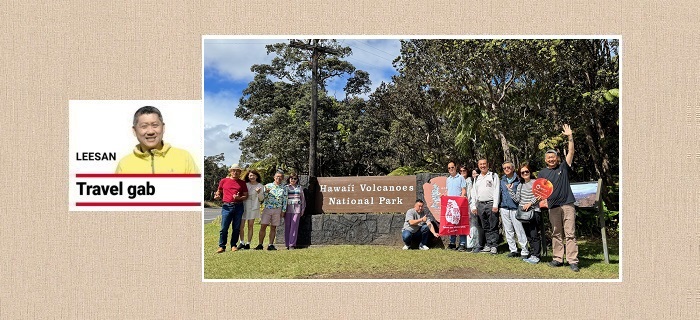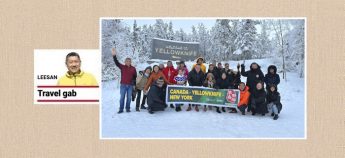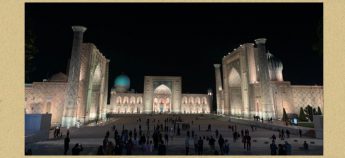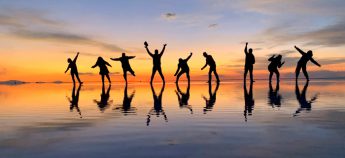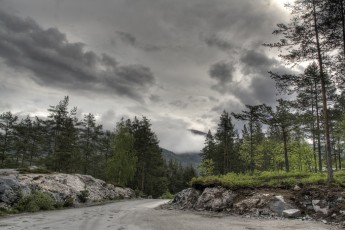Of War and Peace – by leesan
Contemplating history’s biggest events during a visit to Pearl Harbor in Hawaii.
HAWAII became the 50th state of the United States in 1959. The ecosystem and Indigenous customs in the state are totally different from those in the mainland. There are few Caucasians in Hawaii (just over 20%), and controversial political tussles rarely take place here.
The islands are known globally for their pristine beaches, their glorious sunny weather, and of course, Pearl Harbor.
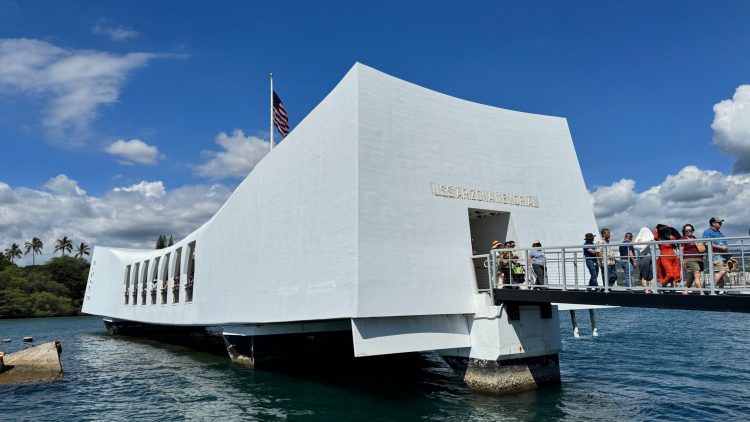
The USS Arizona Memorial was built on the site of the sunken ship during the Pearl Harbor attack. — Photos: Leesan
On the second day of the Chinese New Year, I arrived in Honolulu, and that was when I first came to realise that buried in Hawaii, is a truly great man, Chang Hsueh-liang.
Without Chang, there wouldn’t have been “New China” and “New Asia”, so say history analysts. So, my travel buddies and I decided to pay tribute to this great man who was laid to rest at a hillside cemetery in the city of Honolulu, overlooking the ocean. What I couldn’t quite understand at the time was, why did Chang choose Hawaii as his final resting place?
I got my answer online: After being under house arrest for 53 years in Mainland China and Taiwan, Chang was released in 1991. A year later he moved to Hawaii with his second wife, where they spent the rest of their lives. Chang died in 2001 at the age of 101.
We all know that Hawaii is a land prone to so many natural disasters such as earthquakes, volcanic eruptions and tsunamis, and you would think that the place has bad “feng shui”, right? However, you cannot deny that some very powerful and famous folks were either born or raised in Hawaii.
For example, former US president Barack Obama was born at the Kapi’olani Medical Centre in Honolulu in 1961. He later completed his studies at the city’s most expensive private learning institution – Punahou School – and then worked his way to become the country’s first African-American president…for two terms! That’s not all. That Punahou School also taught another great man. Can you guess who it was?
It was the provisional president of the Republic of China, Dr Sun Yat-sen. With the strong support of his landowner brother Sun Mei, Dr Sun took down China’s last imperial dynasty, and rewrote the global political order, eventually becoming known as the Father of Modern China. Isn’t that incredible? Who would have thought that Hawaii has produced so many great world leaders.
Captain James Cook, the world-famous explorer, “discovered” the Hawaiian islands in 1778. He was killed in Kona on the Big Island in a conflict with the natives the following year.
Actually, the Polynesians were the earliest inhabitants of the islands, and following Cook’s visit and “discovery”, European and Asian immigrants started to flock there; the Kingdom of Hawaii was subsequently established. In 1900, the kingdom fell into the hands of the Americans.
On the fateful morning of Dec 7, 1941, several hundred Japanese fighter aircraft swooped over Hawaii’s Pearl Harbor, thus marking the Black Monday that prompted the US’ direct involvement in World War II.
Hawaii lies 3,700km from the US mainland, and 6,200km from Japan. I really have no idea how the Japanese Marshal Admiral Isoroku Yamamoto managed to attack Pearl Harbor so stealthily from so far away, and was vastly successful in doing so. Yamamoto himself didn’t have a good ending, as he was killed in an ambush while flying at night in China.
My travel buddies asked out of curiosity, “Weren’t most of the residents in Hawaii in 1941 Japanese?” Well, the Japanese have been migrating to Hawaii since the early 19th century, mostly as sugar cane farmers.
At one time, 40% of the total population of Hawaii were from Japan. So it is safe to assume that many Japanese people were either killed or injured in the bombing.
It is said that back then, Japan had planned to take over Hawaii if they won the Pacific War, but we all know that this did not happen.
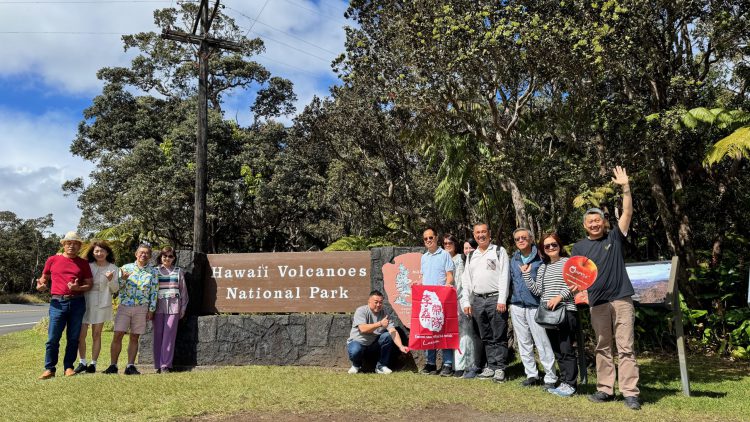
Leesan and his travel buddies at the Hawaii Volcanoes National Park, an active volcanic area located at Hilo on the big Island. It is a UNESCO World Heritage Site.
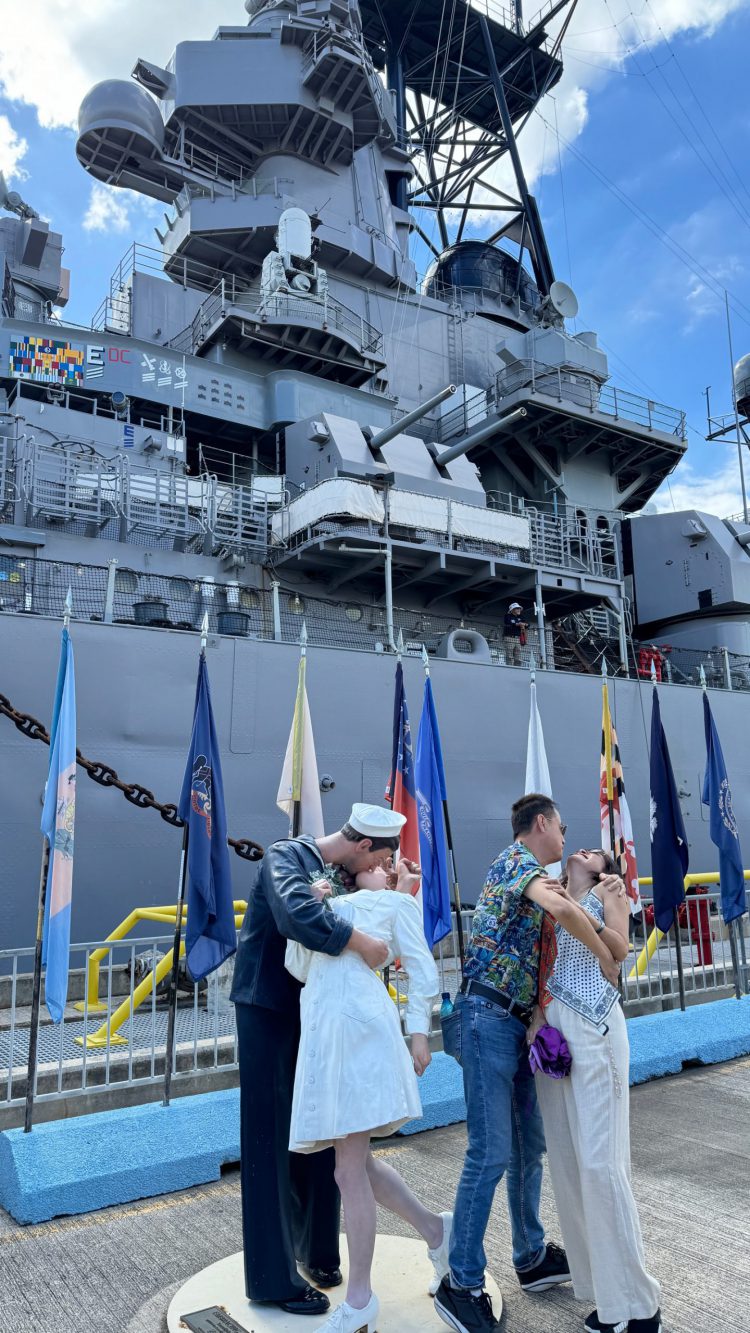
Leesan and his travel buddies at the Hawaii Volcanoes National Park, an active volcanic area located at Hilo on the big Island. It is a UNESCO World Heritage Site.
Meanwhile, the relationship between Japan and Hawaii after the war was unsurprisingly tense, but today it has vastly improved. One could say that they have a pretty close-knit relationship now.
In Honolulu, I couldn’t wait to visit the war memorial and understand more about what happened 83 years ago.
I boarded the ferry at Pearl Harbor, and then set foot on the USS Arizona Memorial. Surprisingly, I was emotionally calm while treading on a site of such immense historical significance, though images of the warship’s sinking by the Japanese that downed the 1,177 troops aboard the ship popped up in my head.
I do admit that I did feel a little melancholic at that moment.
While causes and effects are always expected in any international conflict, I began to wonder if vengeance had to take place at all in these situations.
I later had the opportunity to board the adjacent USS Missouri – also known as Battleship Missouri Memorial – stepping back in time to that historic day of Sept 2, 1945. This was when General Douglas MacArthur signed on behalf of the Allied powers the Japanese Instrument Of Surrender, with representatives of Japan’s Emperor Hirohito in Tokyo Bay.
The signing of this agreement marked an end to World War II, and brought peace around the globe. I thought to myself, “Had they known the eventuality, would they still stubbornly wage a destructive war that exterminated so many innocent lives (estimated to be between 70 and 85 million people)?”
The two world-famous ships are both decommissioned and “laid to rest” at Pearl Harbor, reminding the world that we really need to look back at human follies in the past.
Ironically, however, Pearl Harbor is currently the homeport of US aircraft carriers with over 50,000 troops stationed there. We were shocked to see the gigantic USS Abraham Lincoln ready to head to the whirlpool of presumably another world war.
Times have definitely changed.
Today, Hawaii has metamorphosed into a dazzling destination that has lured countless globetrotters from across the planet to its many irresistible charms. Aloha!
Published in The Star, 24 Feb 2024
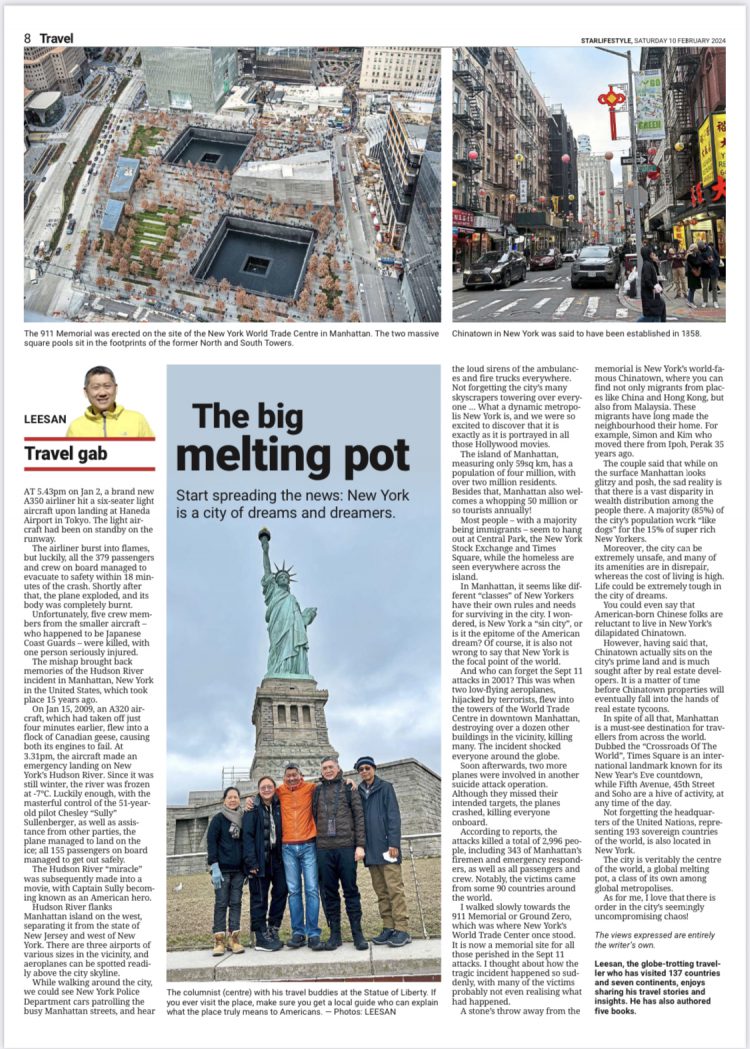
全球超过80000家酒店,Apple101助您轻松订房,出行无忧,绝对优惠价。入住期间付款,多数客房可免费取消!
